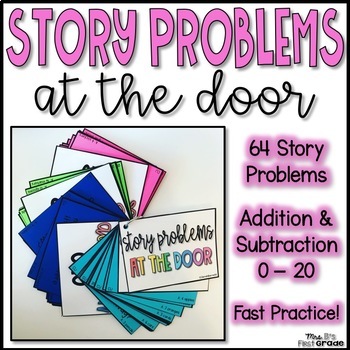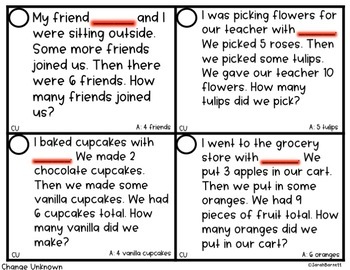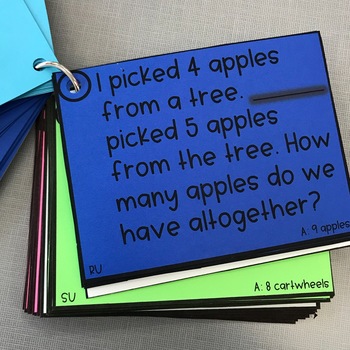Story Word Problems | Addition Subtraction
- PDF
What educators are saying
Description
64 story problems included! My students had always struggled with solving story problems. At the same time, I know how crucial understanding story problems are to math success. I tried to add them in whenever I can – but they often got forgotten. Enter...story problems for the door!
Leave the story problems hanging by your door and use during any and all transition times! You can also keep them by your teacher chair and pull them out when you are waiting for students to come to the meeting area. Practicing story problems are an excellent way to build math fluency.
So easy to use!
⭐ Each chard has a blank for you or your students to input student names. This always makes my kids more interested!
⭐ Three choices for answers:
→ Cards with answers at the bottom.
→ Cards with answers on the back.
→ Cards without answers.
⭐ 64 story problems included - Addition and Subtraction 0 - 20
⭐ Multiple cover choices
⭐ Multiple types of story problems:
→ Result Unknown
→ Change Unknown
→ Start Unknown
The main purpose of story problems in the classroom is to prepare students for making sense and solving problems in later classes or outside of school. That is why I created these opportunities to gather information, make sense of a problem, use various strategies, and solve/check their reasonableness of their thinking - all while solving story problems!
Feedback from teachers:
"I have used this resource with my students during centers and with my own children. Two thumbs up!!!! It assists with reading and math computation at the same time. AWESOME!"
"This was an AMAZING resource to use in the classroom when lining up, waiting for a specials teacher, whenever we had a few minutes. The kids LOVE them."
"SUCH a great resource...easy to print and put together to use right away! I loved using these when we had a few minutes to spare when we got lined up a minute or two too early! Thank you!"
___________________________________________________________________
Don't forget that leaving feedback earns you points toward FREE TPT purchases! I love seeing how you are using them in your own classrooms!
Also, click here to follow me and be notified when new products are uploaded. New products are always on sale for the first 48 hours they are posted. You'll be the first to know.
Please contact me with any questions!
Thank you so much,
Sarah Barnett ❤️





